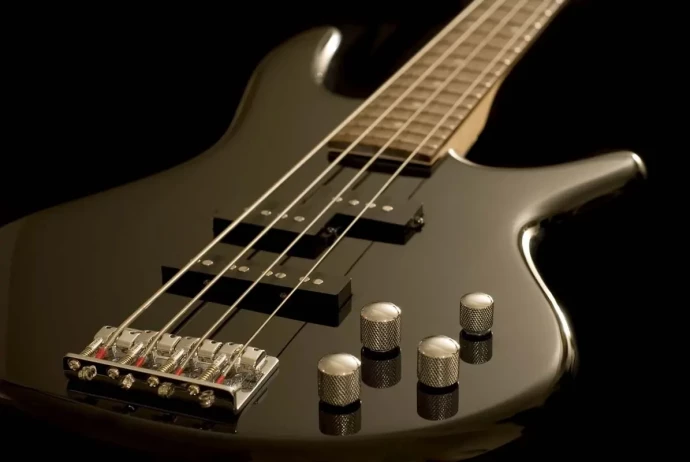What Is an Electric Guitar?

by:guitarnews
What Is an Electric Guitar?
An electric guitar is a guitar that produces sound by vibrating strings over a pickup that converts the vibrations into electrical signals. Those signals are fed into an amplifier, which projects the musical performance at a wide range of volumes. Most pickups function using electromagnetic induction, although non-magnetic pickups exist on a small number of electric guitars.
How Do You Play the Electric Guitar?
Electric guitarists typically produce sound by striking their strings with a pick. Some players pluck electric guitar strings with their fingers, and others use a hybrid of fingers and a pick.
Electric guitarists have a lot of options for altering the timbre and tonal character of their instruments. The guitar’s tone and volume knobs, its variety of pickups, stompbox pedals, and amplifier functions can all contribute to a wide range of sounds. Due to the options presented by these components, electric guitar players like Wes Montgomery, Brad Paisley, Rage Against the Machine’s Tom Morello, and My Bloody Valentine’s Kevin Shields can sound completely different from one another while all technically playing the same instrument.
What Is the Difference Between an Electric Guitar and an Acoustic Guitar?
Electric guitars have many areas of overlap with their acoustic guitar cousins, such as the Spanish guitar, the Hawaiian guitar, the steel guitar, and the lap steel. But electric guitars notably lack those instruments’ hollow bodies, since it projects sound via pickups, not a sound hole.
A Brief History of the Electric Guitar
The earliest electric guitars were made by the National Guitar Corporation, a Los Angeles company famous for its resonator acoustic guitar. Starting in 1931, designers like George Beauchamp, Paul Barth, and Henry Watson created models like the “frying pan” under the National brand. By the following year, Beauchamp and Barth had teamed with Adolph Rickenbacker to form the Ro-Pat-In Corporation (Electro-Patent-Instrument Company)—later named Rickenbacker Electro Stringed Instrument Company. Other early electric guitar manufacturers included Vivi-Tone and Slingerland.
Early electric guitars were popular with jazz guitarists like Charlie Christian, who used them to play amplified single-note solos in the style of big band horn players. Doing so on an acoustic guitar would have been impossible—they’d have been drowned out by their band—but the electric guitar allowed them to project single notes. There was one major drawback to the new instrument, however: feedback from the guitar’s hollow body.
The feedback issue was addressed by guitarist and inventor Les Paul, who invented a guitar built with a solid block of wood running down the middle that he termed “the log.” This was first such instrument to eschew a hollow-body guitar design. It served as the precursor to the solid-body electric guitar that remains deeply popular to this day. Nearly all major brands make a solid-body guitar, whether that’s Fender with its Stratocaster, Telecaster, and Jazzmaster lines, or Gibson with models like the SG and Les Paul’s own namesake model.
Different Types of Electric Guitar: Archtop Electric
Electric guitars come in many forms, but they broadly fit into one of two categories. The first type of electric guitar is known as an archtop guitar.
- 1. These guitars have a semi-hollow sound chamber with a block of solid wood running through the middle. This allows them to share some characteristics of an acoustic guitar while still making them practical for amplification.
- 2. Embedded in the solid block are magnetic pickups, which detect vibrations in the guitar’s strings and transmit these vibrations to an amplifier running on electricity.
- 3. Because of the magnetic properties of the pickups, these guitars (and all electric guitars) must use metal strings (typically steel strings). Otherwise, the pickups will not function.
- 4. The guitars will typically have knobs to control volume and tone, and a selector switch to toggle between pickups.
- 5. Archtop guitars are known for a relatively mellow sound and a resonant character that combines elements of both acoustic and electric playing. They are most popular in jazz and blues but can be found in all popular styles.
- 6. Famous archtop models include the Gibson ES-150, the Gibson ES-335, the Epiphone Casino, and the Gretsch G5420.
Different Types of Electric Guitar: Solid Body Electric
The other (and most popular) type of electric guitar is known as a solid body guitar.
- 1. Solid body guitars are solid all the way through and don’t contain hollow sound chambers.
- 2. Like archtops, they utilize magnetic pickups to amplify vibrating metal strings.
- 3. Like archtops, they contain knobs to control volume and tone, and switches to select individual pickups.
- 4. Like archtops, they don’t require electricity (their amplifiers do), although some may contain active pickups, which run on battery power.
- 5. Solid body guitars tend to be bright and punchy. They make a minimal sound when unplugged, but through an amplifier, they can be turned up to ear-splitting volumes. They are particularly popular in rock, pop, and country music.
- 6. Leo Fender was a master inventor of solid body electric guitars, and for many, the Fender Stratocaster is the quintessential electric guitar—played by the likes of Jimi Hendrix and Eric Clapton. The Fender Telecaster, Jazzmaster, Jaguar, and Mustang are also iconic models. (Fender is also known for its electric bass models and amplifiers.)
- 7. The Gibson Les Paul is another legendary electric guitar. Other popular Gibson models include the SG, the Thunderbird, and the Explorer.
- 8. Guitar design has continued to bring innovation since the invention of the electric guitar. Other prominent solid body guitar makers include Ibanez, Jackson, Schechter, BC Rich, and Reverend. These companies are known for innovating what a modern electric guitar can be. Meanwhile, other companies have sought to carve out a niche market, such as Steinberger, whose experiments with guitar body design seem as bold as the first solid-body guitar back in the thirties.
Tips for Playing Electric Guitar
As with all musical instruments, playing guitar (both the electric guitar and acoustic guitar) can only be mastered with intense practice. You only need to know a few guitar chords to start playing, but proper guitar lessons can go a long way toward propelling you beyond the basics.
It’s also possible to work on your own using your favorite recordings and perhaps internet video lessons. A well-spent practice session will include:
- 1. A warm-up
- 2. Finger exercises
- 3. Working through chord progressions
- 4. Working up and down scales
- 5. Fingerstyle playing
- 6. Flatpicking
- 7. Two-handed tapping
But does every player really need to master all of those techniques? Practically speaking, perhaps not. Your own personal guitar practice routine will be determined by your own personal goals as a player.

